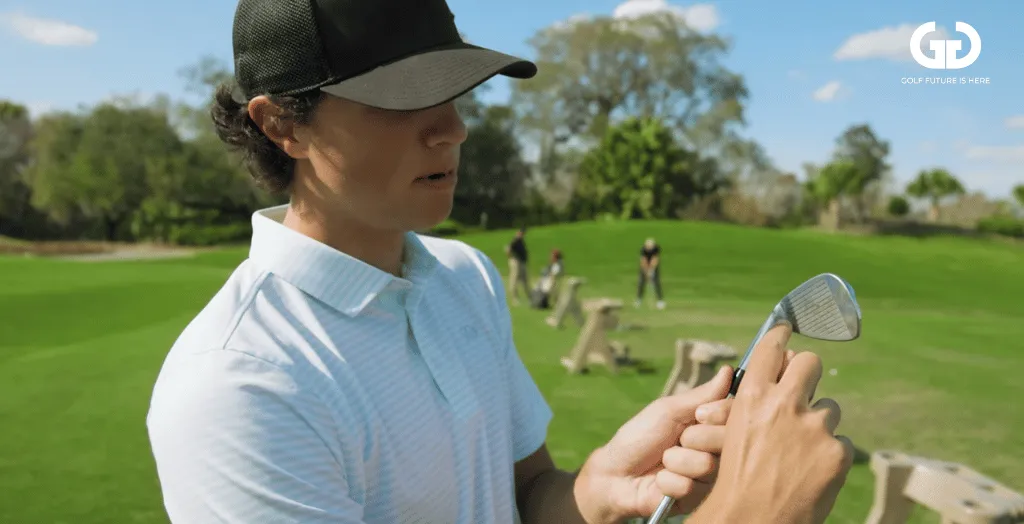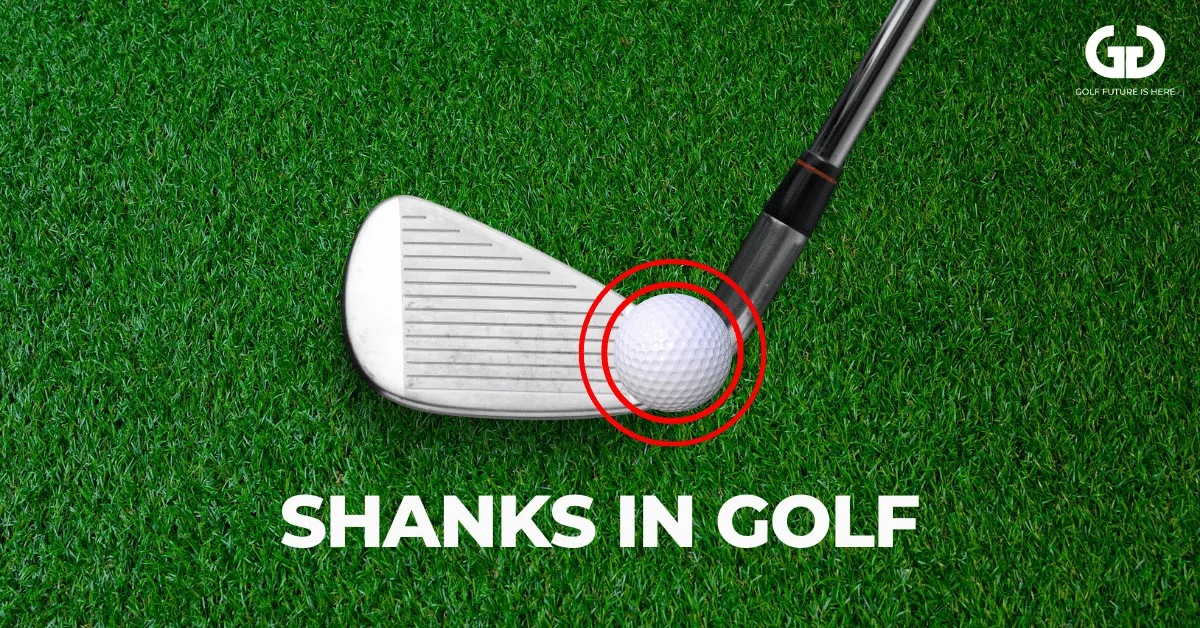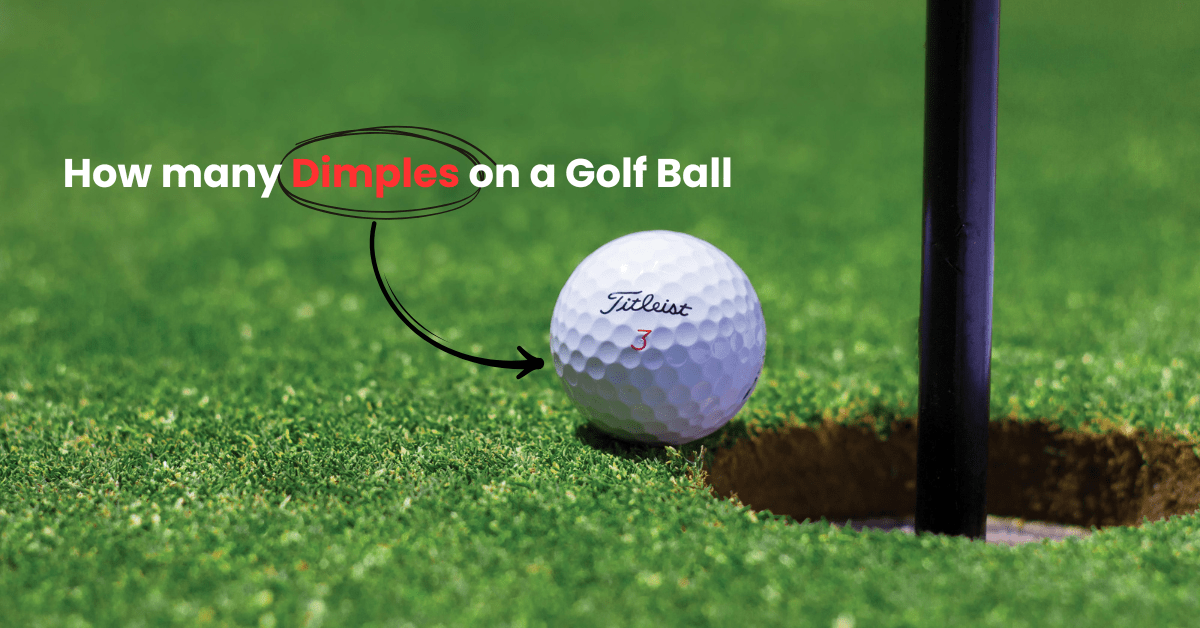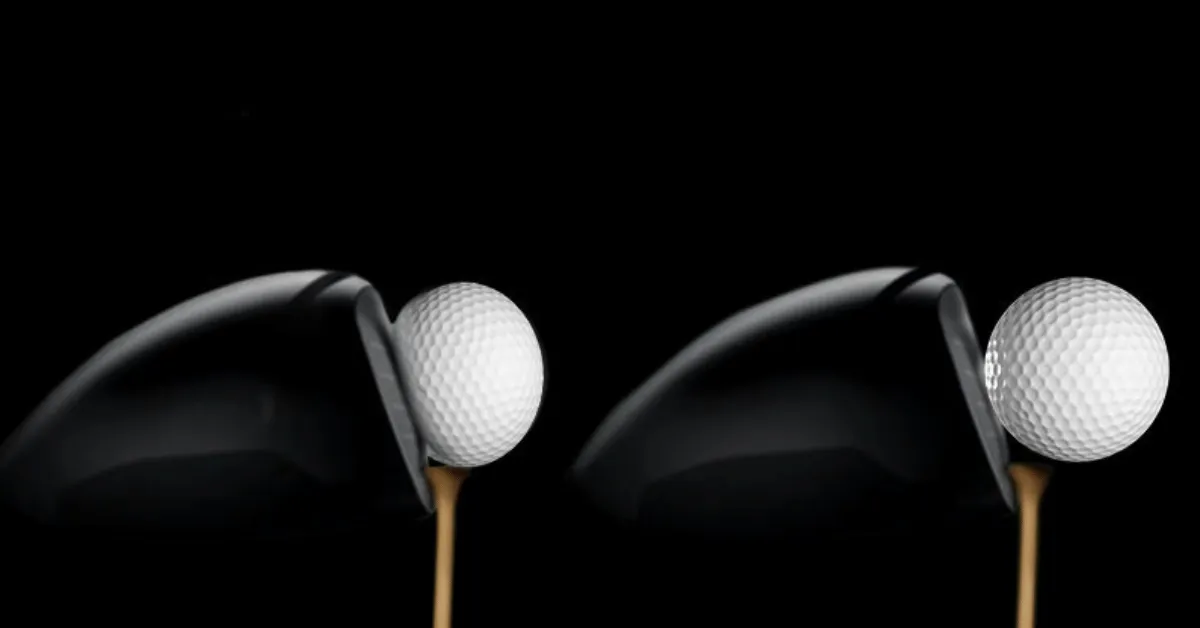Standing near the tee on a sunny day and excitement gearing up in you with every passing second is a different level of fun.
Gripping your driver, feeling the club, and focusing on your target, you hit the ball for a swing, but there’s a twist in the tale.
Instead of reaching your target, it goes near a tree or sand bunker, leaving its path. At the same time, opponents shout with joy, “It’s a shank,” and you become frustrated.
Yet, instead of being disappointed, you should know shanks golf and how to overcome it, and here’s where I will help.
As a noob, I would make a lot of shanks in the beginning. Fortunately, with careful observation and analysis, I used several strategies which have nullified my shanks in golf.
So, without any further ado, let’s dig into the details!
Key Takeaways
- Shanks in golf occur when you hit the ball from the hosel instead of the club face.
- Standing too far from the ball at address, lagging the heel, and early extension are some of the causes of it.
- The Watch Drill, Driver Headcover Heel, and The Miss The Ball Drill are some strategies to avoid it. To know more, keep reading.
What Is A Shank In Golf?

A shank is the wrong type of golf shot. It happens when you hit the ball from the hosel instead of the clubface. This is because by doing so, the ball goes off towards the right at 45°.
What Causes A Shank in Golf?
As mentioned above, when you hit the wrong part of the club (that is, hosel) instead of the clubface. Shanks in golf are common.
Hence, you should record your swings in slo-mo to know why they occurred. The most common reasons that cause a shank are listed below:
Lagging The Hosel
I’ve observed that many players open the clubface during the backswing to fix it when they are stuck with a hook shot. It does help to resolve the issue.
However, sometimes you would overdo it. Thus, your club impacts the ball at the hosel, which causes a shank.
Besides, there might be that you don’t know hook shots. These are when your ball starts straight but dramatically curves towards the opposite side, depending upon which hand you use.
The Solution
To fix shanks golf, you should initially close your clubface while downswing, which always helps. However, in my experience, this isn’t always a temporary solution.
Therefore, you should practice preventing the clubface from opening too wide during the downswing. To achieve it, keep the clubface aimed towards the ball at the takeaway.
These have helped a lot of beginner and veteran golfers not only to fix shanks but also to refine their swings.
Hands Moving Quite Far From Your Body
When your hands move quite far from your body while swinging, you will likely hit the ball near the club’s heel. This even happens if your clubface is at 90° to the target.
Thus, to overcome it, you should raise the grip during the contact. It’s not the ideal way to swing. In many cases, shanks when the hosel gets in contact with the ball before the clubface.
But this doesn’t mean that you can’t shank with a square clubface; take care of where your hands are!
The Solution
The apparent solution to shanks due to hands moving quite far away from your body is to keep them close to your body.
To do so, slow down your swing initially, as the downswing force naturally pulls your hands away from you. You would have witnessed it if your swings were faster than usual.
Early Extension
Early Extension in golf implies a swing fault when your lower body moves toward the ball too early during the downswing. This leads to several issues happening at the time of swing and impact.
Besides, it even creates a need to tweak the club’s position so you don’t hit its heel. More precisely, many golfers face it, even affecting the swing quality.
Early Extension is similar to keeping your hands far from your body during the downswing. However, the causes are different. This is because, though your hands don’t stay closer yet, your lower body moves much closer to the ball.
Due to the above-mentioned position, your body is forced to lift the golf grip too much to mitigate hitting the club’s heel.
The Solution
Early extension happens due to several reasons, and accordingly, the solutions vary.
Below-mentioned is a list of the same:
- Arms Stuck Behind Your Body’s Turn: When your arms are stuck behind your body’s turn, you will stand up to give space to your arms, which creates shanks. Here’s where you create more width in your backswing and keep your arms ahead of the chest as you begin the downswing.
- Steep Shaft Angle During The Swing: When your club has a steep shaft angle, you would again stand up to reduce the steepness leading to shanks. To resolve it, focus on keeping the club shallower when you downswing with your wrists and forearms.
- Open Clubface: When your clubface is widely open, you will take a square stance to it, which leads to Early Extension. To avoid it, strengthen your grip and rotate the forearms more at the impact.
Moreover, different drills mitigate early extension and help with arm and body synchronization, club positioning, and clubface control.
Standing Too Far From The Ball At Address
Many golfers misinterpret that they keep hitting the club’s heel, leading to shanks, because they think standing farther away from the ball would fix it. Consequently, they start moving away from the ball while taking a stance.
But this isn’t true. It’s because, during a downswing, golfers have to stretch themselves to reach toward the ball.
While doing so, your weight would shift on your toes, and the clubface moves away from your body. This creates shanks. To be precise, standing far away from the ball leads to greater shanks in golf.
The Solution
To solve the above issue, you must get closer to the ball even if you are uncomfortable.
This is because when you stand closer, your body naturally moves backward while downswing. Consequently, it makes space for your arms to follow through.
If you stand too distant, your body must move closer to reach the ball. Therefore, standing closer is comparatively beneficial in avoiding shanks.
Additional Solutions And Drills To Avoid Shanks
When you struggle with shanks, drills are one of the smartest approaches to avoid it.
Though all of them are correct, you would feel okay for some, but others would sound weird and incorrect, yet from my experience, I bet these work!
1. Address The Ball On The Heel
You should address the ball on the heel. Since shanks are caused by the club coming in impact at hosel, this method might seem incorrect, but it is not so!
This is because when you address the ball on the hole, your subconscious mind tends to avoid hitting the ball from the heel.
Consequently, your hands are forced to move closer to the center, while a downswing is where you wish to swing the ball.
However, if you move an inch farther, you might hit them, causing a bit of an inaccurate shot. However, this doesn’t seem right; it is comparatively better than the shank. It prevents shanks and improves your shots.
2. The Miss The Ball Drill
The Miss The Ball Drill is another useful one that prevents shanks and even improves your swing.
For those who wish to extend, this is an asset for you early! “The Miss The Ball Drill” implies that here, you have to intentionally keep in your mind and swing so that your club doesn’t hit the ball.
You must be wondering how it would work.
Well, while doing so, your body, by default, creates more space during the downswing, thereby improving your regular swings.
One common reason for shanks is that your club doesn’t get enough space to contact the clubface and instead hits from the hosel.
Therefore, by creating an extra space during the downswing, the hosel doesn’t come in contact with the ball and thus avoids shanks.
3. The Two Ball Drill
The Two Ball Drill is called so as it involves using two balls. It is somewhat similar to the above drill yet shows variations in setup and how it works!
Here’s how you should execute it:
- Set up two golf balls in close vicinity so they are in a line in front of each other.
- Swing such that you miss the first ball near you but hit the second one.
Yet you should note that your clubhead follows an appropriate path while hitting the balls. This ensures that you don’t hit the first one yet learn how to control the clubhead path.
This drill helps you achieve consistency during swings, and as you know, controlling the clubhead prevents shanks.
4. The Watch Drill
As the name implies, the Watch Drill uses your watch or, more precisely, keeping an eye on certain aspects during a swing.
This has to avoid shanks. What distance do you have to do exactly, and how does it work?
Below-mentioned are details of the same:
- Hold the club with only your left hand.
- Execute half swings.
- See your watch or logo on your glove because.
- During the backswing, it should be pointing at the target line.
- While follow-through, it should be away from the target line.
It ensures that you keep your clubface square while hitting the ball, thus a helpful strategy to avoid shanks.
Moreover, other tweaks exist. Some include ensuring correct stability of the clubface while swinging and such factors to improve.
5. Hit A Shank On Purpose
This is my favorite method to avoid shanks and has been an asset in my golf journey. It involves learning from your mistakes!
Well, it was not a hypothesis, and you must deliberately hit a shank. It would be great if you exaggerate your shank. Consequently, you will understand which things helped you in hitting a shank.
Therefore, while aiming to prevent shank, you would give a clearer picture of what to do! So when hitting a shank, you get an idea of how you hit it and accordingly analyze things to avoid.
It’s noteworthy that this drill refines your swings as well.
6. Driver Headcover Drill
The driver headcover drill aims to improve your overall swinging technique using a simple setup with your headcover.
To begin with, put the driver’s headcover outside the golf ball, such that the club’s toe is near the headcover.
If you are someone who swings outside in rather than inside out, then you might hit or touch the headcover.
Hence, position the ball close to the club’s toe, giving you the impression of swinging from inside and moving outward to your aim.
Further, you must consistently practice the Driver Headcover Drill, which will help you understand the swing path properly. So, when you hit a draw, you can control your swings better.
How to Bounce Back After A Golf Shank?
Now that you have already made a shank, which you might feel is a crime, it’s okay to make mistakes. There’s always a scope for improvement in everything you do!
Besides, you should now aim to improve the rest of your game after a shank!
Here’s how to do so:
1. Stay Relaxed And Keep Your Calm
The next level of grief would strike when you shank in golf. There would even be mixed feelings of anxiousness, frustration, stress, and disappointment.
Instead of spending the rest of your game battling your mind and heart and achieving bad scores, take a few deep breaths. Next, visualize and plan your next shot and forget about the shank.
Besides, I have also experienced that in tense situations, we golfers lose our energy, spirit, and enthusiasm.
There comes a phase in the next shot when our mind is in parallel work thinking about the game. This did have a negative impact on my grip and swing.
Therefore, grip your club normally, relax your forearms, and hit the shot.
2. Keep Your Weight Back
Another strategy to bounce back efficiently after a shank is to observe your weight distribution. When you approach the ball, your weight should be towards your heels and not distributed on your toes.
Besides, don’t stand too far from the ball, as you must lean slightly for the swing. This stance will exert your weight on the toes, which isn’t recommended.
Instead, you should stand closer to the ball to control your swing, and it goes inside to outside, avoiding shanks.
3. Visualize The Ideal Shot
Human psychology goes such that we focus on the negative instead of having an optimistic attitude.
A similar case is after a shank in golf, your mind would be lost in it, thinking about your mistakes and failures. But the game doesn’t stop on one shank. Focus on controlling the rest of the game.
Therefore, you should change your mind. Visualize the ideal shot you would wish to hit.
Forget your mistake; focus on improving in the next shot to control the game. This positive mindset will help you improve your game.
Conclusion
Shanks golf doesn’t mean the end of the round and losing the game. It’s only a one-shot mistake that can deteriorate your scores if you don’t improve the rest of the round.
Therefore, rather than spoiling, you should understand what caused a shank.
When your club hosel hits the ball instead of the club face hitting it, that is a shank. Yet poor stance, setup, and uneven weight distribution are some factors responsible for it.
Besides, you can use various drills to avoid it, improving your swing. Consequently, you would perform better for the rest of the round.
FAQs
Why do I suddenly start shanking?
You suddenly start shanking due to improper weight distribution, grip, or setup/stance changes.
What is the most common cause of golf shank?
The most common cause of a golf shank is an improper club path.





0 Comments